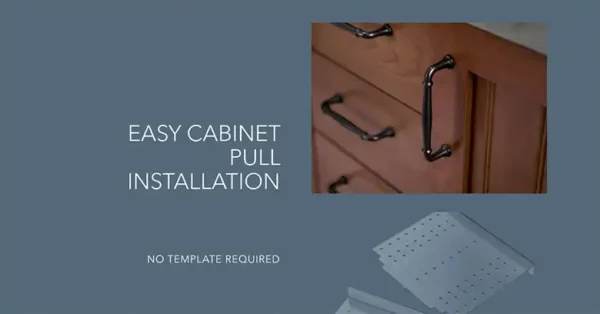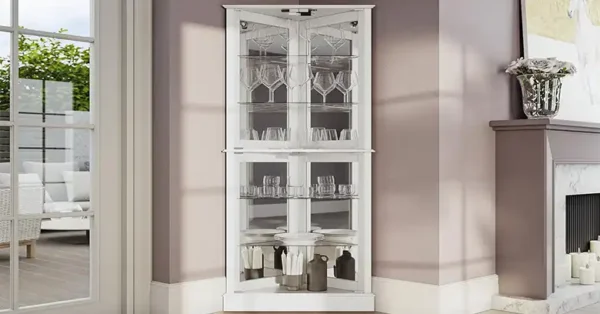Remodeling a kitchen is one of the highest-impact home improvements you can make — it changes how you live, eat, entertain, and how your home feels. But it’s also one of the most complex projects: plumbing, wiring, structural changes, cabinetry, appliances, finishes, and a thousand tiny decisions. This guide makes the whole thing manageable. Read on for a complete, practical walkthrough you can follow from inspiration to inspection.
1. Before You Start: Vision, Use & Budget
Define what you want — and why
Start with three questions:
- Why are you remodeling? (Function, resale, aesthetic, energy efficiency)
- Who will use the kitchen most often? (Family, entertainer, single cook)
- What must change vs. what would be nice-to-have?
Answering these prevents scope creep later.
Establish realistic priorities
Rank priorities as A (must), B (should), C (nice). Examples:
- A: Replace failing cabinets, fix a leaking sink.
- B: Add an island for prep space.
- C: High-end faucet upgrade.
Create a firm budget (and contingency)
Set a hard max and three tiers:
- Basic — necessary repairs and small cosmetic upgrades.
- Midrange — new cabinets, countertop, decent appliances.
- High-end — custom cabinets, premium stone, professional appliances.
Always include a contingency of 10–20% for surprises (hidden water damage, structural issues, delays).
2. Project Types & Scope — Choose Your Remodel Type
Not all remodels are equal. Choose the scale that fits your budget and goals:
1. Cosmetic Refresh
- Replace cabinet doors or repaint.
- New hardware, backsplash, light fixtures.
- Cost: lowest; minimal disruption.
2. Midrange Remodel
- Replace cabinets, countertops, flooring.
- New appliances and some layout tweaks.
- Cost: moderate; more downtime.
3. Full Gut Remodel
- Remove everything, change layout, move plumbing and electrical.
- Structural work and custom cabinetry common.
- Cost: highest; longest timeline.
4. Additions or Open-plan Conversion
- Remove load-bearing walls or add space (bump-out).
- Best for seriously limited existing space.
- Requires engineer, permits, highest cost & complexity.
3. Step-by-Step Remodeling Process
Below is a practical sequence you can follow. Some steps happen simultaneously; others require permits or inspections.
Step 1 — Inspiration & Research
- Save images of layouts, styles, materials.
- Note specifics: cabinet style, countertop edge, backsplash tile size, lighting types.
- Create a “lookbook” folder or Pinterest board.
Step 2 — Measurements & Existing Conditions
- Measure the room: wall lengths, ceiling height, window/door placements.
- Note current plumbing, electrical, and gas locations.
- Take photos from multiple angles.
Step 3 — Concept & Layout Planning
- Choose a layout: galley, L-shape, U-shape, island, one-wall.
- Consider the work triangle: sink, stove, refrigerator should form an efficient flow.
- Plan clearances: 42–48″ circulation behind an island, 30–36″ between counters.
Step 4 — Hire Design Professional / Contractor
- Decide: design-build firm, general contractor + designer, or DIY with subcontractors.
- Get at least three bids. Verify licenses, insurance, and references.
- Request a detailed scope: materials, timeline, payment schedule, changes process.
Step 5 — Detailed Selections & Orders
- Finalize cabinets, countertops, appliances, tile, flooring, sink, faucet, lighting, hardware.
- Order items early — lead times for cabinets and appliances can be 6–12+ weeks.
- Keep documentation: product specs, warranties, delivery dates.
Step 6 — Permits & Approvals
- Check local building codes. Permits often required for electrical, plumbing, structural changes.
- Permit timelines vary — factor these into your schedule.
Step 7 — Demolition & Rough-ins
- Protect the rest of the house (plastic sheeting, dust barriers).
- Demolition: remove cabinets, countertops, flooring as required.
- Rough-ins: plumbers and electricians run new lines, HVAC/venting gets installed.
- Structural work happens if walls are removed or altered.
Step 8 — Inspections (Rough)
- Municipal inspections of electrical and plumbing rough-ins — schedule promptly.
- Fix any issues before proceeding.
Step 9 — Installations
- Subfloor prep and flooring installation (if flooring goes under cabinets).
- Cabinet installation (base cabinets first).
- Countertop templating and fabrication for stone/quartz (measurements taken after cabinet install).
- Countertop installation.
Step 10 — Appliances & Fixtures
- Install appliances, hood, oven, dishwasher.
- Hook up sink, faucet, garbage disposal, and any gas lines.
- Connect built-in lighting, outlets, and switches.
Step 11 — Backsplash, Paint & Trim
- Tile backsplash, paint walls and ceiling, install trim and baseboards.
- Add finishing hardware to cabinets.
Step 12 — Final Inspections & Punch List
- Final municipal inspection.
- Walk through with contractor and make a punch list for minor fixes.
- Confirm warranties, manuals, and care instructions.
Step 13 — Deep Clean & Move In
- Professional clean to remove dust and construction residue.
- Organize cabinets, install organizers, set up staging for everyday use.
4. Realistic Timeline
Timelines vary widely. Typical durations:
- Cosmetic: 1–2 weeks
- Midrange: 4–8 weeks
- Full gut: 8–16+ weeks (permits, lead times, custom work extend this)
Tips:
- Order long-lead items first (custom cabinets, stone, appliances).
- Plan a temporary kitchen nearby — microwave, kettle, mini-fridge.
5. Cost Breakdown (Typical Ranges & Where Money Goes)
Note: prices vary by region, size, and choices. Below are ballpark percentages and ranges.
Typical Budget Allocation (by percentage)
- Cabinets & hardware: 30–35%
- Countertops: 8–12%
- Appliances: 10–15%
- Plumbing & electrical: 8–12%
- Flooring: 6–10%
- Labor / installation: 20–35%
- Lighting & fixtures: 3–6%
- Backsplash & finishes: 2–5%
Example price ranges (small to large kitchen)
- Basic refresh: $5,000 – $15,000
- Midrange remodel: $20,000 – $50,000
- High-end remodel: $60,000 – $150,000+
How to prioritize spend
- Spend on things you can’t easily change later: layout, cabinets, professional installation.
- Save on trendy items (backsplash tile) if budget limited — they’re easier to change.
6. How to Save Money Without Compromising Quality
- Keep plumbing & major appliances in place to avoid costly rerouting.
- Refinish or repaint existing cabinets instead of replacing full boxes.
- Choose engineered quartz over high-end marble for durability and lower maintenance.
- Buy appliances on sale or during seasonal promotions.
- Use semi-custom cabinets rather than full custom; they strike a solid balance.
- Install open shelving in non-critical zones to reduce cabinetry cost.
- Mix splurge and save: splurge on the countertop and sink (daily use), save on lighting fixtures that are easy to swap later.
7. Common Mistakes & How to Avoid Them
Mistake 1: Skipping the Plan
- Solution: invest in a clear design and detailed scope of work.
Mistake 2: Underestimating Storage Needs
- Solution: plan for deep drawers, pull-outs, vertical dividers, pantry organizers.
Mistake 3: Poor Lighting Design
- Solution: layer lighting — ambient (recessed), task (under-cabinet), accent (pendants).
Mistake 4: Choosing Trends Over Timelessness
- Solution: stick to classic cabinet fronts and neutral counters; use trends as accents.
Mistake 5: Cutting Corners on Ventilation
- Solution: ensure hood venting is sized for your cooktop and vents outside.
Mistake 6: Ignoring Workflow
- Solution: prioritize work triangle and prep zones (prep sink, landing spaces).
Mistake 7: Not Planning for Waste & Storage of Materials
- Solution: arrange where debris will go and how the house will remain livable during work.
Mistake 8: Not Verifying Contractor’s Scope
- Solution: ask for a written contract, payment schedule, and clear change order process.
8. Design Inspirations & Practical Examples
Below are detailed design directions with real-world practicality.
Modern Minimalist
- Cabinets: Flat-panel, matte lacquer (white or muted grey).
- Countertop: Light quartz with subtle veining.
- Backsplash: Full-height slab or invisible grout subway tile.
- Hardware: Minimal or handleless.
- Lighting: Linear pendants over island, recessed ceiling lights.
- Why it works: Clean visual lines make small spaces feel larger and are low maintenance.
Warm Farmhouse
- Cabinets: Shaker or inset paneled in cream or sage.
- Countertop: Butcher block or honed stone.
- Sink: Apron-front farmhouse sink.
- Accents: Open shelving, vintage brass hardware.
- Flooring: Wide plank wood or wood-look tile.
- Why it works: Inviting, layered textures; practical for family kitchens.
Industrial Chic
- Materials: Exposed brick, metal shelving, concrete or reclaimed wood counters.
- Lighting: Edison bulbs, black metal pendants.
- Cabinets: Dark painted cabinets or metal fronts.
- Appliances: Stainless steel, pro-style ranges.
- Why it works: Bold, lived-in look that’s great in lofts or open plan spaces.
Timeless Transitional
- Neutral palette: Whites, greys, warm wood tones.
- Mix of materials: Classic shaker cabinets with modern hardware.
- Countertop: Marble or marble-look quartz for elegance.
- Why it works: High resale appeal and balanced style.
Small Kitchen Hacks
- Use light colors and reflective surfaces.
- Pull-out tables or folding leaf islands.
- Vertical storage: pegboards, hanging rails.
- Slim, integrated appliances to save space.
9. Fixtures, Finishes & Material Guide
Cabinets
- Stock (prebuilt): Cheapest, fastest.
- Semi-custom: Best value balance.
- Custom: Highest cost, exact fit, unique features.
Countertops
- Laminate: Budget friendly.
- Butcher block: Warm but needs maintenance.
- Granite: Durable, unique veining.
- Quartz: Low maintenance, consistent pattern.
- Marble: Beautiful, porous — needs sealing.
Flooring
- Ceramic/Porcelain tile: Water resistant, durable.
- Hardwood: Timeless, can be refinished.
- Engineered wood: More stable in moist areas.
- Luxury vinyl plank (LVP): Affordable, water resistant.
Backsplash
- Subway tile: Classic.
- Large slabs: Seamless, modern.
- Mosaic: Accent areas.
Sinks & Faucets
- Single bowl undermount: Best for large pots.
- Double bowl: Great for multitasking.
- Commercial faucets: High arc and pull-down sprayers add function.
10. Practical Checklists (Pre-remodel & Final Walkthrough)
Pre-remodel Checklist
- Finalize layout and cabinet configuration.
- Order long-lead items (cabinets, appliances, stone).
- Confirm contractor, licenses, and insurance.
- Get required permits.
- Arrange temporary kitchen and living logistics.
- Agree on payment schedule and warranties.
Final Walkthrough Checklist
- All cabinet doors and drawers open/close smoothly.
- Countertop seams, edges, and overhangs are correct.
- Appliances properly installed and vented.
- No leaks at sink, dishwasher, or plumbing fixtures.
- Electrical outlets and garbage disposal operate.
- All lighting works and switches labeled.
- Paint is even with neat trim.
- Contractor has provided warranties and manuals.
11. Eco-Friendly & Smart Upgrades
Green choices
- Energy Star appliances.
- Low-VOC paints.
- Reclaimed wood or FSC-certified cabinets.
- LED lighting and efficient ventilation.
Smart upgrades
- Smart oven and refrigerator with Wi-Fi.
- Smart lighting and voice control.
- Touchless faucets and programmable thermostats.
These add convenience and may increase resale value.
12. How to Live Through a Remodel
- Set up a temporary kitchen with a counter toaster oven, instant pot, microwave, and kettle.
- Keep a bin for daily essentials — plates, cutlery, cleaning supplies.
- Set realistic expectations — noise, dust, and temporary loss of space are normal.
- Schedule work in phases if living on site.
13. Return on Investment (ROI) & Resale Considerations
- Kitchens typically provide some of the best ROI when selling a home.
- Midrange kitchen remodels often recoup more of their costs than high-end remodels, but this depends on the local market.
- Neutral finishes and classic design choices appeal to the largest number of buyers.
- Document upgrades (energy efficiency, new mechanicals) — these are selling points.
14. Frequently Asked Questions (Short & Practical)
Q: Should I move plumbing or electrical?
A: Only if it’s necessary for your layout. Moving plumbing is one of the most expensive parts of a remodel.
Q: Can I live at home during a gut remodel?
A: Yes, but expect disruption. Set up a temporary kitchen and high-traffic barriers. Consider staying elsewhere if the remodel is extensive.
Q: How long will appliances be unavailable?
A: Install timing depends on the sequence — many contractors install appliances only when counters, cabinets, and utility hookups are ready. Expect appliance delivery/install near the project end.
Q: Do I need to hire a kitchen designer?
A: For complex layouts or high budgets, yes. For small refreshes, many homeowners manage with good planning and contractor guidance.
15. Sample 8-Week Midrange Remodel Timeline (Practical Example)
Week 1: Finalize design, order cabinets/appliances, permit submission.
Week 2: Demo prep, protect home, demo begins.
Week 3: Rough plumbing & electrical; framing/structural if needed.
Week 4: Inspections, subfloor prep, begin flooring.
Week 5: Cabinet installation.
Week 6: Countertop templating & fabrication.
Week 7: Countertop install, appliance hookup.
Week 8: Backsplash, paint, hardware, final inspections, cleanup.
16. Sample WordPress SEO Elements (Ready to Paste)
Suggested slug: ultimate-kitchen-remodeling-guide
SEO title: The Ultimate Kitchen Remodeling Guide — Steps, Costs & Design Ideas
Meta description: A complete 4,000-word guide to kitchen remodeling: step-by-step process, accurate cost breakdowns, mistakes to avoid, and design inspiration. Perfect for planning your next renovation.
Suggested tags: kitchen remodel, home renovation, kitchen design, remodeling cost, kitchen ideas
Suggested categories: Home Improvement, Kitchen & Bath, DIY & Remodeling
17. Final Tips — Decisions That Matter Most
- Layout first. A beautiful kitchen that doesn’t work will frustrate you.
- Quality where you touch. Spend on cabinet function (soft-close, dovetail drawers), sink and faucet.
- Don’t cut corners on ventilation. Good airflow protects cabinets and finishes.
- Plan for storage. Efficient storage beats extra square footage.
- Document everything. Keep contracts, receipts, warranties, and manuals in one folder.
18. Closing: Your Remodel, Your Rules
A kitchen remodel is equal parts practical planning and personal expression. The technical work — permits, rough-ins, inspections — must be respected, but there’s lots of room for creativity in finishes and functionality. Whether you’re aiming for a cozy farmhouse kitchen or a clean modern prep space, careful planning, the right team, and sensible budgeting will turn the chaos of construction into a room you and your family will love for years to come.




